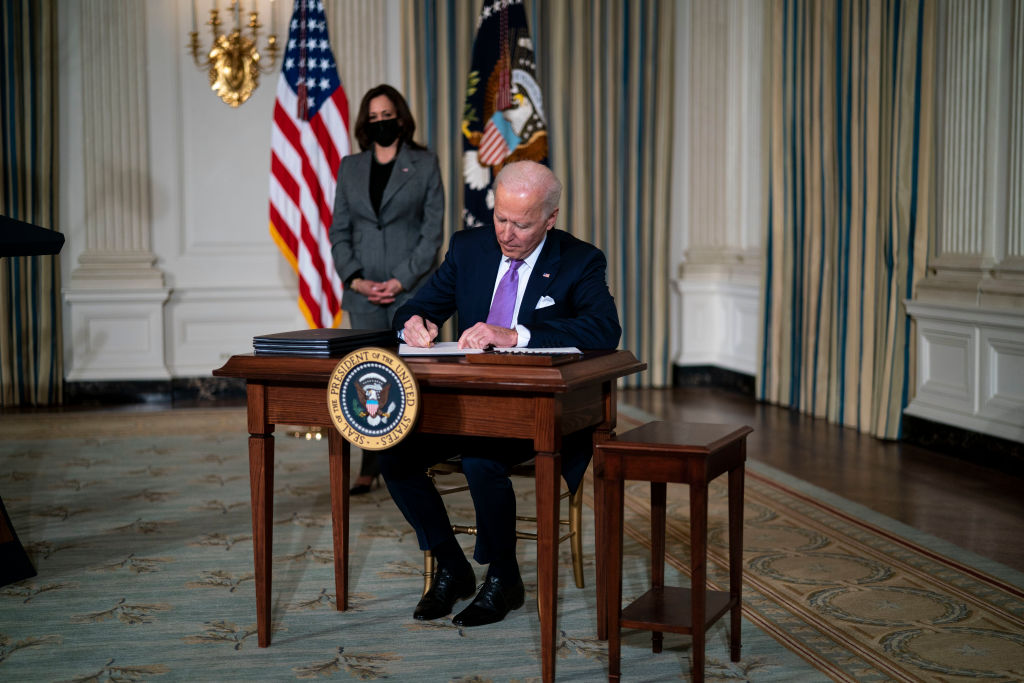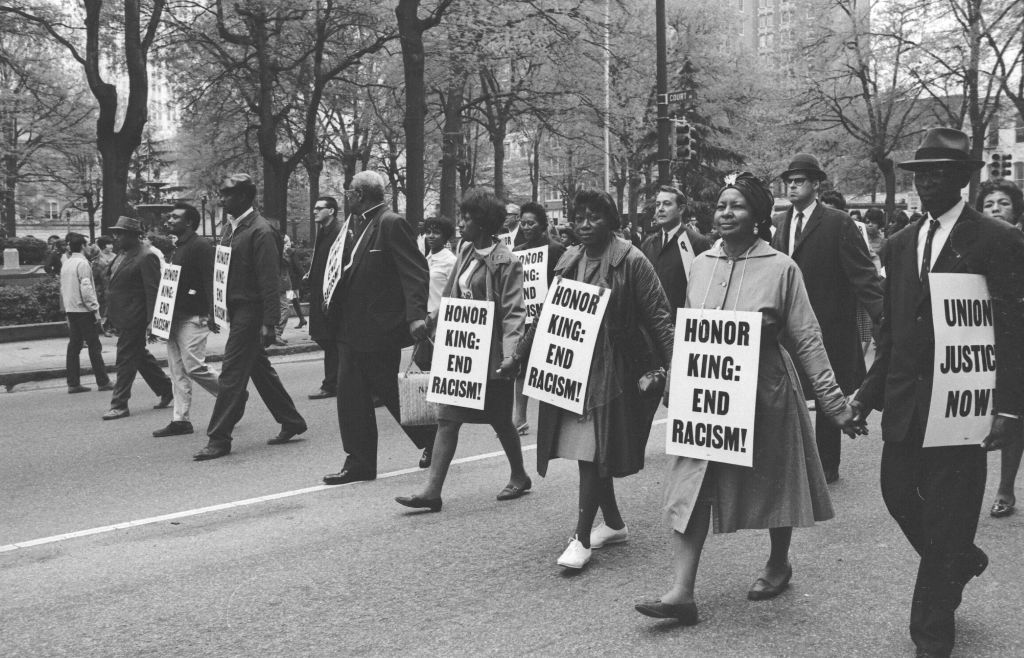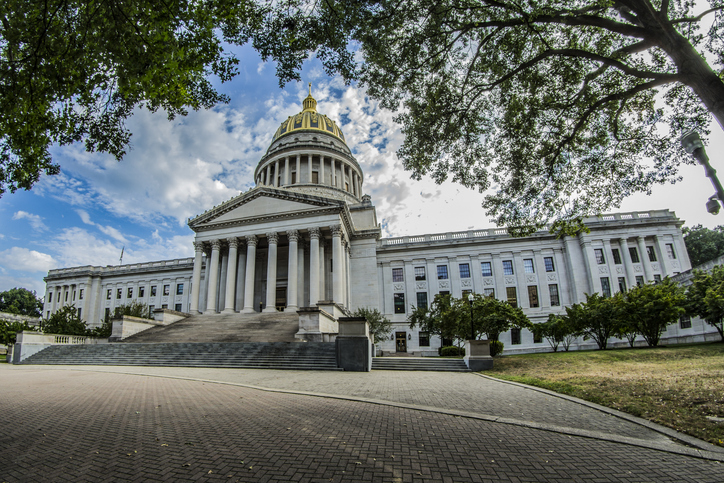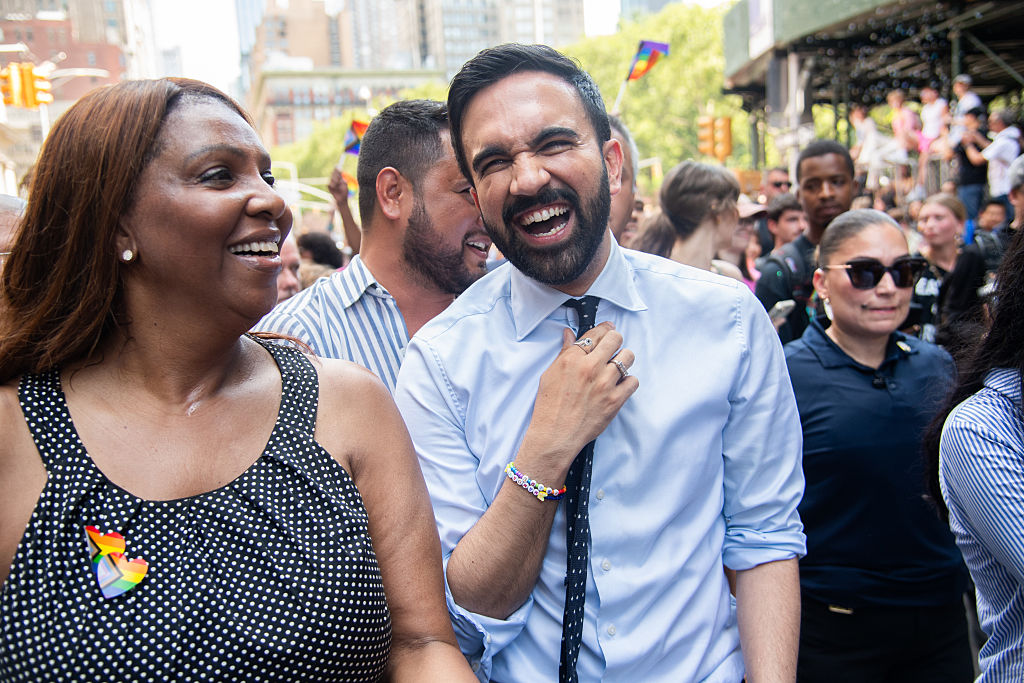Racial Equity: It’s Time For The Federal Government To Lead
Op-Ed: It’s Time For The Federal Government To Lead On Racial Equity

Vice President Kamala Harris looks on as President Joe Biden signs executive orders related to his racial equity agenda in the State Dining Room of the White House on January 26, 2021, in Washington, DC. | Source: Pool / Getty
With backlash over the very discussion of race, the work of racial equity has never been more important. We know that systemic racism is baked into the DNA of this nation. Government policies at the federal, state, and local levels have helped to sustain inequities that advantage one race of people at the expense of other races, particularly Black and brown people. Now is the time for the government, at all levels, to embed racially equitable practices into all of its policies from public to employment and beyond.
While many people know it is time for action, most do not know where or how to start to enact change. Many are asking, ‘am I capable of enacting change’ and ‘where do I plug in’ or ‘what if I get this wrong?’ Certainly, each of us has a role to play in creating the community we envision, but some of us carry more responsibility than others. For instance, local, state, and federal agencies can do more as they have greater resources and greater programmatic opportunities.
For years, Race Forward, through our Government Alliance on Race and Equity, a network of more than 430 local and state government jurisdictions, has understood the pivotal role governmental leaders can play in advancing equity. President Biden’s historic executive order, “Advancing Racial Equity and Support for Underserved Communities Through the Federal Government,” has paved the way for the federal government to wield its power to dismantle centuries of systemic racism in this country.
The executive order requires federal agencies to work on racial equity assessments and prepare a federal-level action plan to advance equity throughout institutions and in governmental policies. As a result, 90 federal agencies began racial equity action plans. The plans were released in April 2022.
The strength of these plans is being assessed via a partnership between two organizations that have long worked to address racial equity. My organization, Race Forward, which initiated a Federal Initiative to Govern for Racial Equity shortly after the Biden Executive Order, and PolicyLink reviewed a sampling of the plans and will soon release our findings. The purpose is to offer tangible feedback that may bolster the work of leaders at the local, state and federal levels. We will highlight where these agencies may have opportunities for improvement.
Through this work, roughly 400+ jurisdictions may see a boon in their efforts to address racial equity work. While this work was preceded by the Government Alliance on Race & Equity, Race Forward has created a new container for this work titled, the Federal Initiative to Govern for Racial Equity. Our goal is to:
- Normalize conversations around racial equity to ensure a common language and common vocabulary among federal institutions,
- Help agencies organize internally and externally to achieve racial equity, and
- Operationalize the work of racial equity by implementing new practices, policies and plans.
While there has been progress, change won’t happen overnight. Additionally, advancing racial equity in a sustainable way is not the work of one employee or one office. Sometimes there is a tendency to hire just one person or create just one office, but there must be a shared responsibility to do this work, and equity must be a core value, across federal agencies. The goal is to encourage sustained change at the federal level and put the right systems in place to ensure this happens. This will allow the federal government to meet the needs of the vulnerable and underserved.
And many, many people are vulnerable. For instance, 100 million people are living below the poverty line. Of this figure, 52% of people living below the poverty line are people of color, and 48% are white. We must be asking ourselves, ‘how do we respond to segments of the population who are underserved, whether that’s based on race or income status’ and then refuse to rest until we’ve addressed underlying issues.
Academics have long written on social and racial inequities. From the data, we know that we must confront and acknowledge the history of racial injustice. Indeed, historic neglect is a self-inflicted wound. And the level of inequity we are seeing is not sustainable. For example, this country has lost more than half a million lives because of COVID-19; those who perished were mostly Black and Latino, and they were most vulnerable due to preexisting conditions or working in lower-income jobs (which were considered “essential” but were not offered healthcare insurance, etc.).
It is time for the federal government to step up. We can no longer (not that we ever could) afford to operate in a culture of avoidance, color-blindness, or bureaucratic neutrality. We must reverse the trend within public institutions of maintaining a culture of race neutrality. We must operate differently. The Biden Administration is ready. The question becomes, are our elected leaders at all levels of government ready as well? If the answer is no, what must we do to ensure we have leaders who are?
Carlton Eley is Senior Director for Federal Strategies for Race Forward, a nonprofit organization that brings systemic analysis and an innovative approach to complex race issues to help people take effective action toward racial equity.
SEE ALSO:
Poll Suggests Reproductive Justice ‘Extremely Important’ To Black Women Voters This Election
















